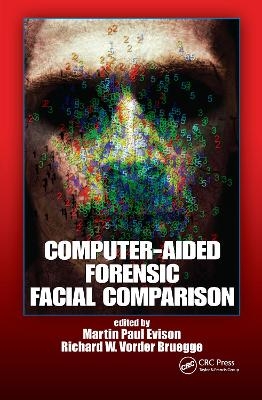
Computer-Aided Forensic Facial Comparison
Crc Press Inc (Verlag)
978-1-4398-1133-7 (ISBN)
- Titel z.Zt. nicht lieferbar
- Versandkostenfrei innerhalb Deutschlands
- Auch auf Rechnung
- Verfügbarkeit in der Filiale vor Ort prüfen
- Artikel merken
Supported by considerable background material, research data, and prototypic statistical and applications software, this volume brings together contributions from anthropologists, computer scientists, forensic scientists, and statisticians. Topics discussed include:
Face database collection in 3D
Error and distinguishing power associated with craniofacial landmarks
Statistical analysis of face shape variation
Comparison of instrumentation
Court admissibility issues
Missing data
Computer applications development
Based on the quantification and analysis of more than 3000 facial images, this seminal work lays the foundation for future forensic facial comparison, computer applications development, and research in face shape variation and analysis. Using experimental and real case data, it demonstrates the influence of illumination, image resolution, perspective, and pose angle on landmark visibility. Downloadable resources are included which contain the raw 3D landmark datasets for 3000 faces, additional datasets used in 2D analysis, and computer programs and spreadsheets used in analysis and in the development of prototypic applications software.
Dr. Martin Evison is associate professor of anthropology, University of Toronto, director of the University’s Forensic Science Program, and a member of the Advisory Committee of the Centre for Forensic Science and Medicine. He has a Ph.D. in ancient DNA from the University of Sheffield, and from 1994 until 2005 he was the forensic anthropologist at Sheffield Medico–Legal Centre, where he led a research group focusing on computational and molecular methods of human identification. He has undertaken case work on five continents in forensic archaeology and anthropology, facial identification, and contamination or innocent transfer of DNA. He has published in Journal of Forensic Sciences and Forensic Science Communications among other journals, and is currently leading a research project examining genetic factors underlying normal face shape variation. In September of 2010, Dr. Evison won a prize for best presentation in the Biometrics session at the Australian and New Zealand Forensic Science Society. Dr. Richard W. Vorder Bruegge has worked for the Federal Bureau of Investigation (FBI) since 1995. His work involves analyzing film, video, and digital images that relate to crime and intelligence matters, as well as testifying in court. He has conducted thousands of forensic examinations in hundreds of cases. He has testified as an expert witness in federal and state courts across the United States, as well as internationally. An intrinsic part of his job is to conduct research in the field of forensic image analysis, including facial identification. He was chair of the Scientific Working Group on Imaging Technology (SWGIT) from 2000 to 2006 and was elected chair of the Facial Identification Scientific Working Group (FISWG) in 2009. In 2007, he was invited to brief the National Academy of Sciences Committee on the Future of Forensic Sciences on the discipline of forensic photographic comparisons. His publications include a chapter in the John Wiley Encyclopedia of Imaging Science and Technology titled Imaging Sciences in Forensics and Criminology, as well as articles published in the forensics and biometrics literature. He has delivered close to 100 formal presentations in forensic science meetings and is a fellow of the American Academy of Forensic Sciences. The FBI has designated him as the bureau’s point of contact for face and iris recognition.
Introduction. Image Quality and Accuracy in Three 3D Scanners. Shape Variation in Anthropometric Landmarks in 3D. A Large Database Sample of 3D Facial Images and Measurements. Investigation of Anthropometric Landmarking in 2D. Effect of 3D Rotation on Landmark Visibility. Influence of Lens Distortion and Perspective Error. Estimation of Landmark Position Using an Active Shape Model. Generation of Values for Missing Data. Admissibility. Application Toolset. Problems and Prospects. Appendix A. Appendix B. Index.
| Erscheint lt. Verlag | 31.3.2010 |
|---|---|
| Zusatzinfo | 33 Tables, black and white; 24 Illustrations, color; 131 Illustrations, black and white |
| Verlagsort | Bosa Roca |
| Sprache | englisch |
| Maße | 156 x 234 mm |
| Gewicht | 550 g |
| Themenwelt | Informatik ► Theorie / Studium ► Künstliche Intelligenz / Robotik |
| Naturwissenschaften ► Biologie | |
| Recht / Steuern ► Strafrecht ► Kriminologie | |
| Technik ► Elektrotechnik / Energietechnik | |
| Technik ► Umwelttechnik / Biotechnologie | |
| ISBN-10 | 1-4398-1133-4 / 1439811334 |
| ISBN-13 | 978-1-4398-1133-7 / 9781439811337 |
| Zustand | Neuware |
| Haben Sie eine Frage zum Produkt? |
aus dem Bereich


